PROJECTS
VLNGO
2017
ESPAÇO SARACVRA

Vista da exposição SARACVRA [Espaço Saracura] Rio de Janeiro, 2017

Pano de boca Tecido de algodão bordado, dimensões aproximadas: 30cmX100cmx34cm SARACVRA [Espaço Saracura] Rio de Janeiro, 2017

Vitrine 1: objetos variados; artefatos arqueológicos; fragmentos de sambaqui (4000 a.c.); arcadas dentárias de barro; resina; resina folheada a ouro; apitos indígenas de madeira e cerâmica; vaso de cerâmica zoomórfico restaurado; base de madeira com ídolo; sinos de metal; miniatura de animal (resina); objeto de gesso; vaso Maragogipe restaurado; fragmentos de azulejo português e vidro; tubo de lança perfume dos anos 20; fotos de época; fotografia Kirlian de aura; réplicas de ossos em barro; pedr

Vitrine 1: objetos variados; artefatos arqueológicos; fragmentos de sambaqui (4000 a.c.); arcadas dentárias de barro; resina; resina folheada a ouro; apitos indígenas de madeira e cerâmica; vaso de cerâmica zoomórfico restaurado; base de madeira com ídolo; sinos de metal; miniatura de animal (resina); objeto de gesso; vaso Maragogipe restaurado; fragmentos de azulejo português e vidro; tubo de lança perfume dos anos 20; fotos de época; fotografia Kirlian de aura; réplicas de ossos em barro; pedr

Detalhe da Vitrine 1: fotografia de aura Kirlian; réplicas de ossos em barro; arcada dentária de barro; pedras. SARACVRA [Espaço Saracura] Rio de Janeiro, 2017

Detalhe de Vitrine 1: vaso Maragogipe restaurado, vaso de cerâmica restaurado, pedras, arcadas dentárias de barro, resina e resina folheada a ouro; vaso de cerâmica zoomórfico restaurado; base de madeira com ídolo; miniatura de animal (resina). SARACVRA [Espaço Saracura] Rio de Janeiro, 2017

Detalhe da Vitrine 1 (gaveta): Livro (Viagem pitoresca e histórica ao Brasil (DEBRET, 1834); moedas antigas e conchas. Dimensões variáveis. SARACVRA [Espaço Saracura] Rio de Janeiro, 2017

Detalhe da Vitrine 1 (gaveta): Livro de artista SARACVRA [Espaço Saracura] Rio de Janeiro, 2017

[Detalhe] Livro de artista SARACVRA [Espaço Saracura] Rio de Janeiro, 2017
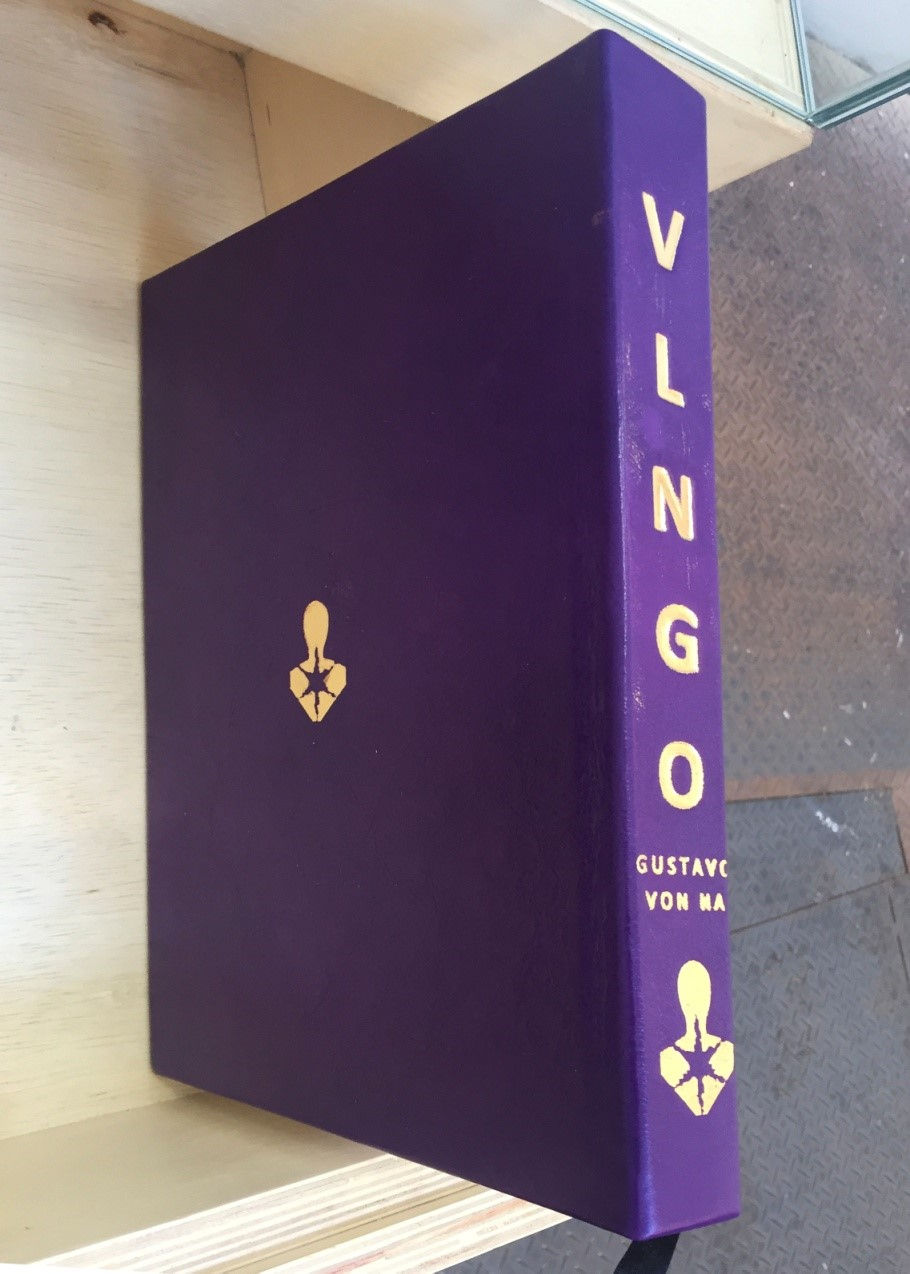
Livro de artista SARACVRA [Espaço Saracura] Rio de Janeiro, 2017

Detalhe de vitrine SARACVRA [Espaço Saracura] Rio de Janeiro, 2017

Detalhe de vitrine SARACVRA [Espaço Saracura] Rio de Janeiro, 2017

Vista da exposição SARACVRA [Espaço Saracura] Rio de Janeiro, 2017

Vista da exposição SARACVRA [Espaço Saracura] Rio de Janeiro, 2017

Vista da exposição SARACVRA [Espaço Saracura] Rio de Janeiro, 2017

Vista da exposição SARACVRA [Espaço Saracura] Rio de Janeiro, 2017

Artefatos arqueológicos SARACVRA [Espaço Saracura] Rio de Janeiro, 2017

Artefatos arqueológicos SARACVRA [Espaço Saracura] Rio de Janeiro, 2017

Vista da exposição SARACVRA [Espaço Saracura] Rio de Janeiro, 2017
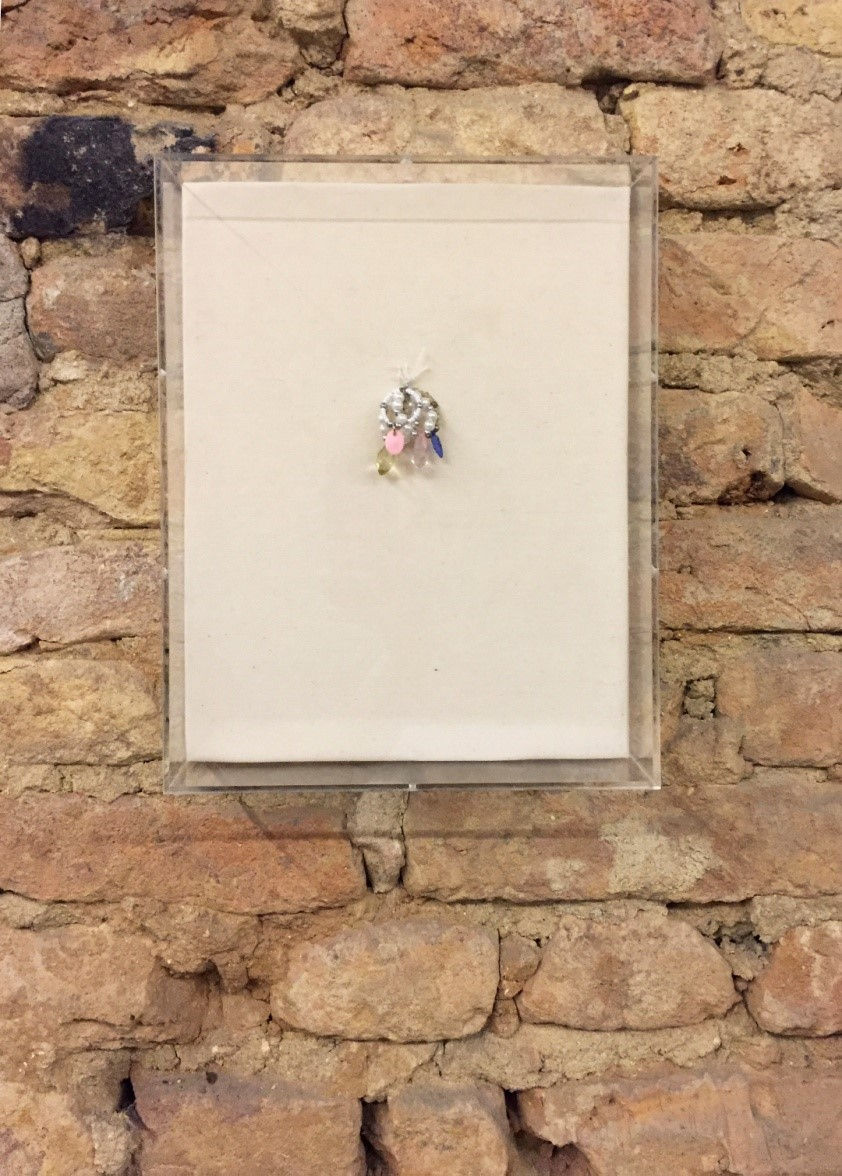
Bijoux diversos amarrados sobre tecido de algodão, 30cmX24cm SARACVRA [Espaço Saracura] Rio de Janeiro, 2017

[Detalhe] Bijoux diversos amarrados sobre tecido de algodão, 30cmX24cm SARACVRA [Espaço Saracura] Rio de Janeiro, 2017

Vaso com flores SARACVRA [Espaço Saracura] Rio de Janeiro, 2017

Vaso Maragogipe de cerâmica restaurado e Polaroid Aura. Dimensões variáveis. SARACVRA [Espaço Saracura] Rio de Janeiro, 2017

Vaso Zoomórfico de cerâmica restaurado e Polaroid Aura. Dimensões variáveis. SARACVRA [Espaço Saracura] Rio de Janeiro, 2017

Fragmento de Sambaqui e Polaroid Aura. Dimensões variáveis. SARACVRA [Espaço Saracura] Rio de Janeiro, 2017

Tubo de Lança-Perfume, fotos de época e Polaroid Aura. Dimensões Variadas SARACVRA [Espaço Saracura] Rio de Janeiro, 2017

Fotografia de aura Kirlian Dimensões variáveis. SARACVRA [Espaço Saracura] Rio de Janeiro, 2017
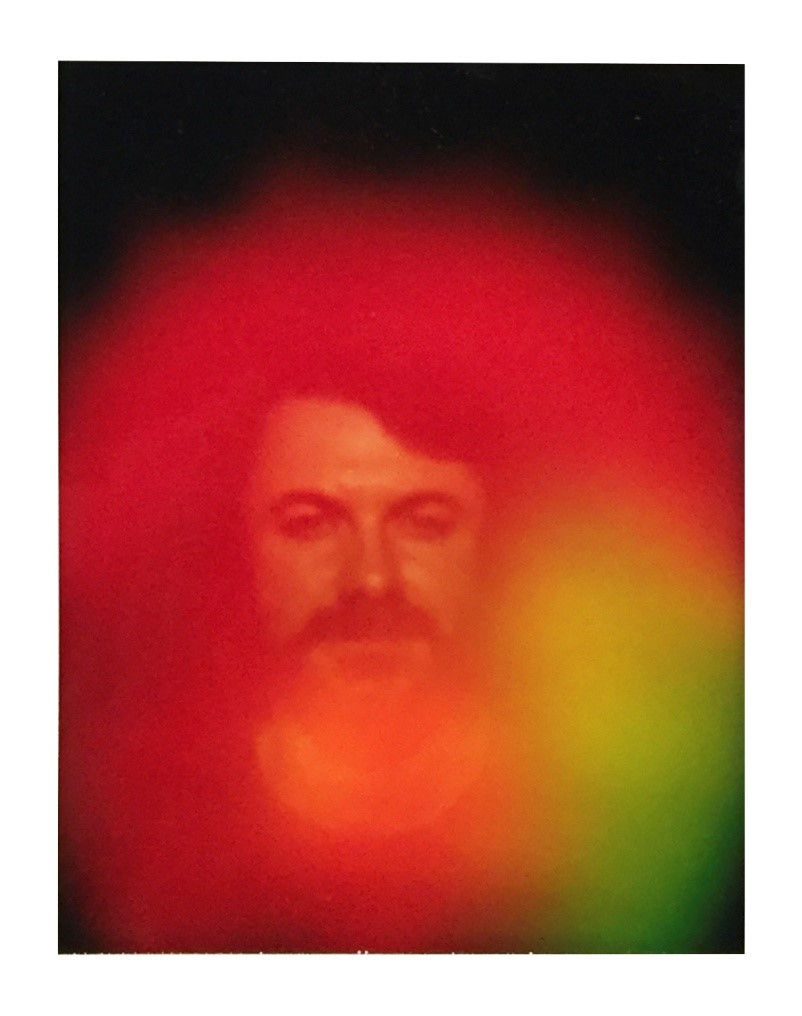
Polaroid Aura de artista, 10,5cmX8,2cm SARACVRA [Espaço Saracura] Rio de Janeiro, 2017

Barro moldado com plantas, dimensões variadas SARACVRA [Espaço Saracura] Rio de Janeiro, 2017

Algemas Fios de algodão e couro, 10,5x14cm SARACVRA [Espaço Saracura] Rio de Janeiro, 2017

Pano de boca II Tecido e algodão bordado, dimensões aproximadas: 30cmX100cmx34cm SARACVRA [Espaço Saracura] Rio de Janeiro, 2017

Azulejo português restaurado, 15cmX15cm SARACVRA [Espaço Saracura] Rio de Janeiro, 2017

Azulejo português restaurado, 15cmX15cm SARACVRA [Espaço Saracura] Rio de Janeiro, 2017

Fragmento de Azulejo Português instalado no Cais da Imperatriz, RJ. 10.6 x 8.5cm SARACVRA [Espaço Saracura] Rio de Janeiro, 2017
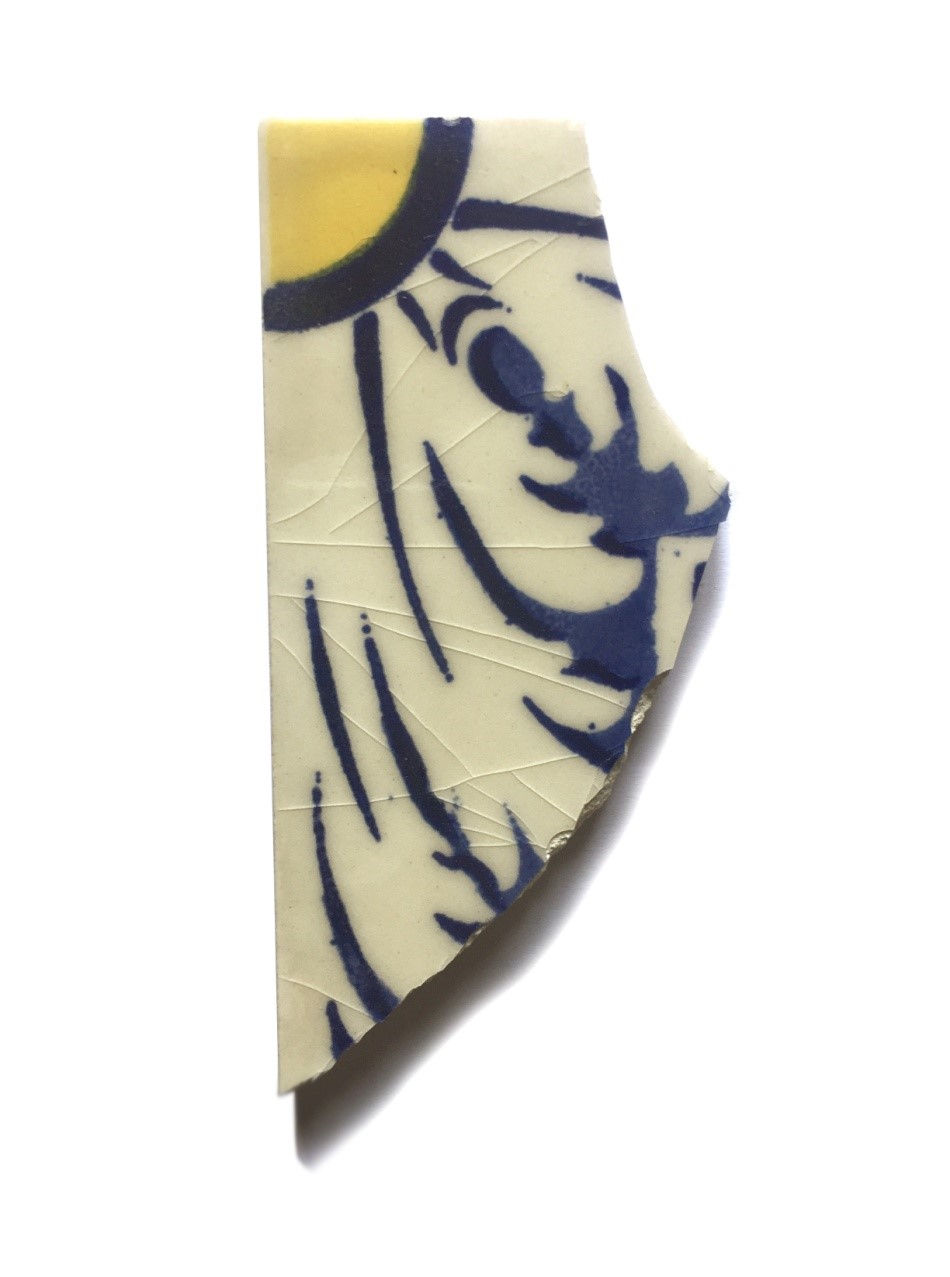
Fragmento de Azulejo Português instalado no Cais da Imperatriz, RJ. 10.6 x 8.5cm SARACVRA [Espaço Saracura] Rio de Janeiro, 2017
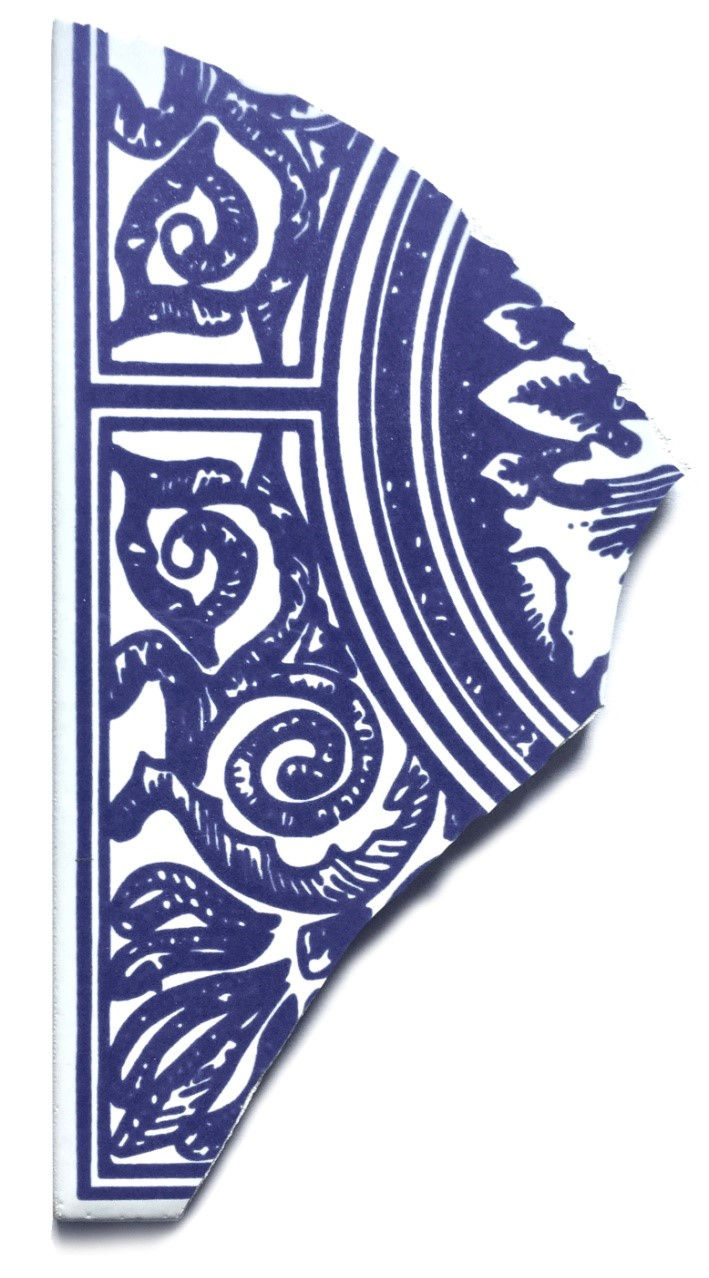
Fragmento de Azulejo Português instalado no Cais da Imperatriz, RJ. 13.3 x11cm SARACVRA [Espaço Saracura] Rio de Janeiro, 2017
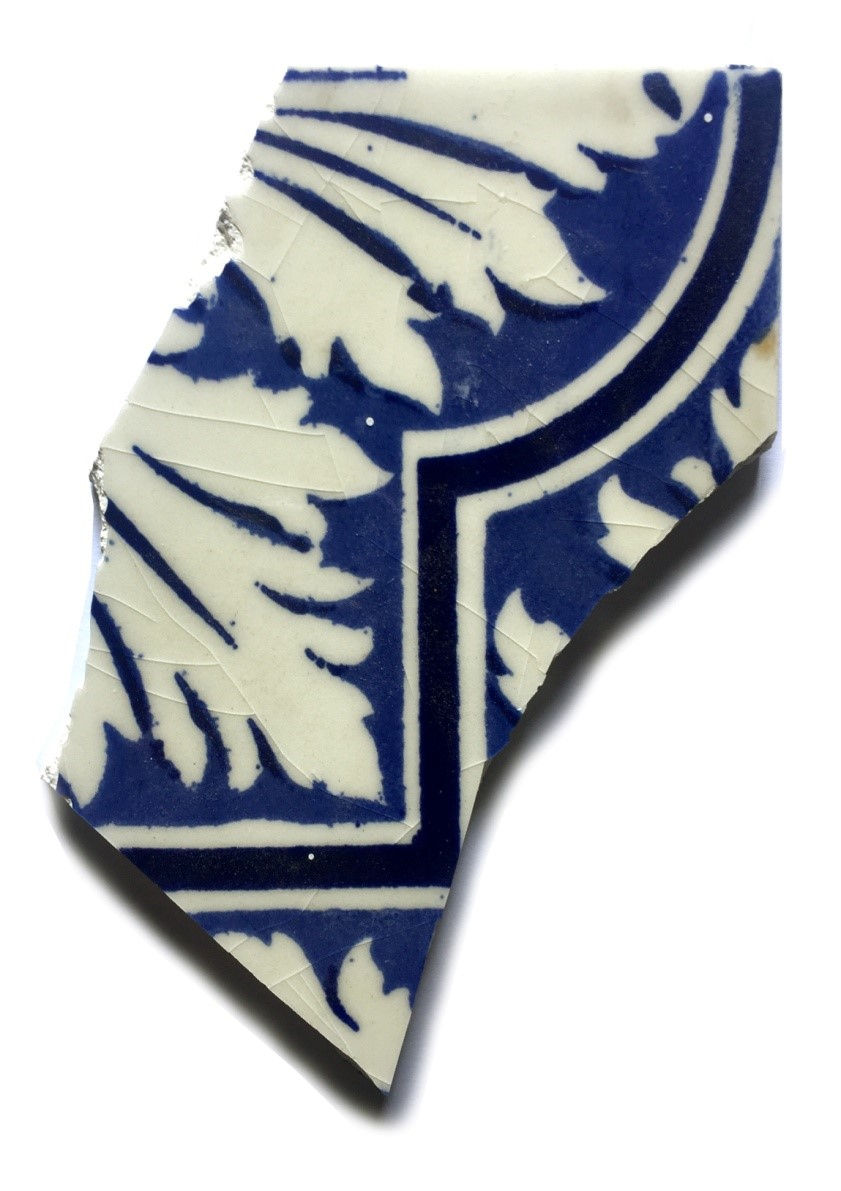
Fragmento de Azulejo Portugus instalado no Cais da Imperatriz, RJ. 13cmx11cm SARACVRA [Espaço Saracura] Rio de Janeiro, 2017
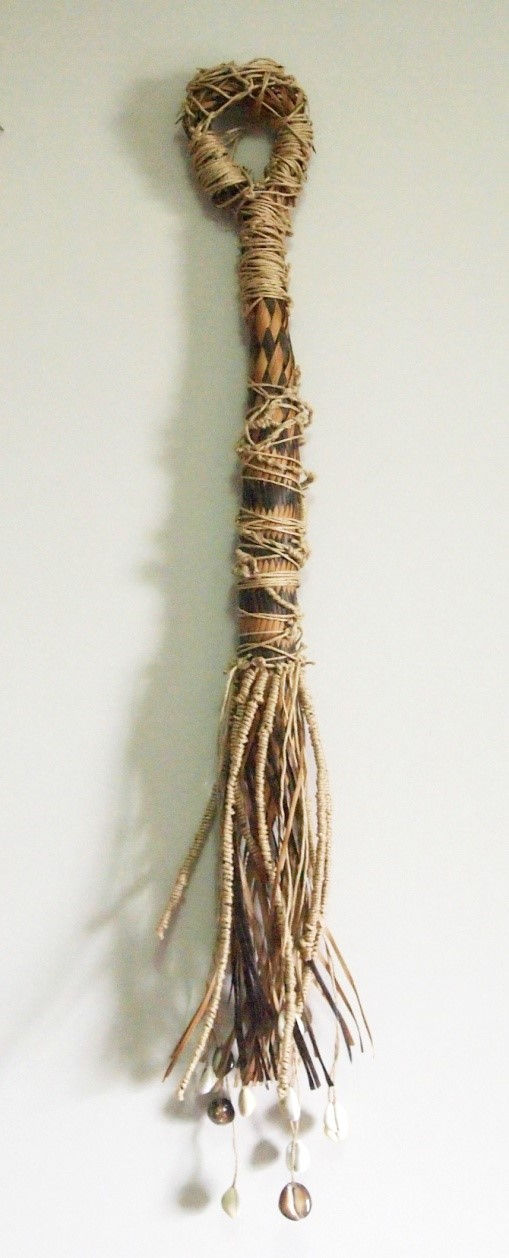
Objeto ritualístico Palha e corda de algodão, 75cmX09cm SARACVRA [Espaço Saracura] Rio de Janeiro, 2017
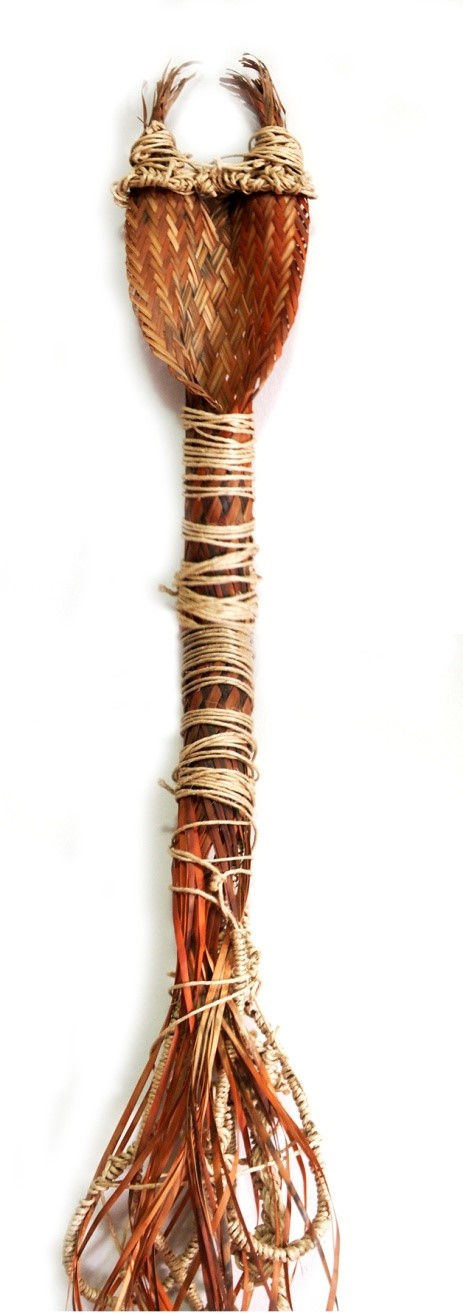
Objeto ritualístico Palha e corda de algodão, 75cmX09cm SARACVRA [Espaço Saracura] Rio de Janeiro, 2017
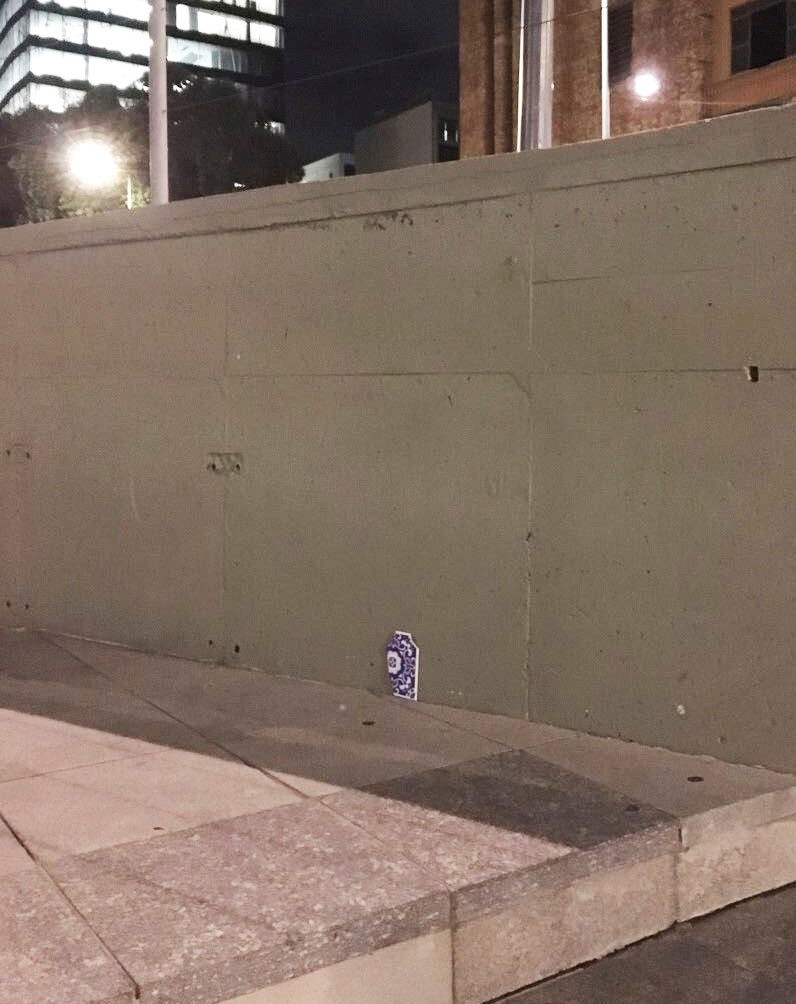
Registro de intervenção urbana Fragmentos e azulejos portugueses restaurados instalados no Cais da Imperatriz no Rio de Janeiro. Dimensões variáveis. SARACVRA [Espaço Saracura] Rio de Janeiro, 2017

Registro de intervenção urbana Fragmentos e azulejos portugueses restaurados instalados no Cais da Imperatriz no Rio de Janeiro. Dimensões variáveis. SARACVRA [Espaço Saracura] Rio de Janeiro, 2017
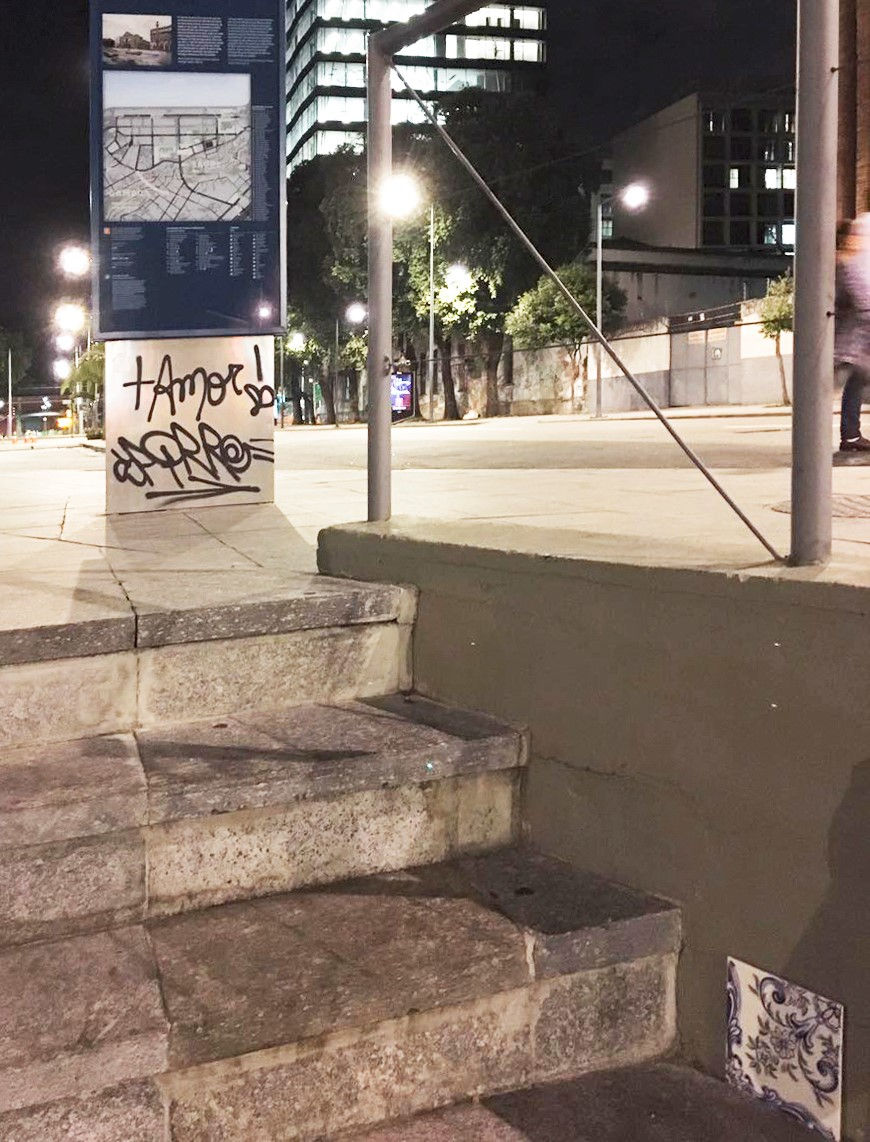
Registro de intervenção urbana Fragmentos e azulejos portugueses restaurados instalados no Cais da Imperatriz no Rio de Janeiro. Dimensões variáveis. SARACVRA [Espaço Saracura] Rio de Janeiro, 2017
It's all true!
At the end of the century. XVIII, while the French Revolution was taking place in France, hundreds of slave ships arrived in Brazil. A dichotomy that is still present today, since it is easier to find Brazilian textbooks and school programs related to the French Revolution than slavery or indigenous culture. It is in this flow of non-recognition of origins that we continue to revolve, co-opting silenced generations to assume a veiled past.
In a country with an illegitimate government, talking about our history and the current situation is almost a crime, since more than a century after abolition, the order of command remains the same: “don't think, work”. In this sense, it remains easier to build the Museum of Tomorrow with investments of around 215 million, than to keep the Instituto dos Pretos Novos alive with aid of 60 thousand reais per year. To paraphrase Caetano Veloso: what was still construction is now ruin.
Taking into account the practices of Porto Maravilha and all its symbolic representation, Gustavo von Ha presents an installation that makes us aware of its events, which to this day continue to be narrated by criminal actions. It goes against the grain of what is given to us as true and seductive that the artist points to this place marked by a slave port, built in 1811 adjacent to the slave market, where hundreds of thousands of imprisoned Africans passed through to be traded.
It is against this past that VLNGO is structured, but in a poetic and scientific way. The artist sheds light on this issue through objects found at the site and mixed with similar ones from different places, all sanitized for handling or restored, cataloged and with their auras photographed. There are pieces, artifacts, materials and photographs that construct a Brazilian identity subjugated by the gaze of those who come from outside.
VLNGO discusses the stifling of the unspoken word, which represses the individual's subjectivity and their performance in the world. This is an exhibition that points to emptying of our historical narrative, covered with aura, in a contemporary world where everything is true.
Paula Borghi
Curator and cultural manager of Espaço Saracura
Saracvra's findings
The artist Gustavo von Ha was invited to hold a solo exhibition at Espaço Saracvra, located in Cais do Valongo. During one of the visits, as we toured the rooms of the mansion, Gustavo noticed that a staircase led to an abandoned room, which, during the renovation, had not been restored due to lack of funds. He noticed that the walls of this place were bulging, as if they contained some kind of stuffing. Immediately, as if taken by a sudden obsession, he struck the wall, which, very weakened, revealed the insides of the building. There, fragments of various objects were revealed, from Maragogipe vases to tiles, from zoomorphic bowls to ritualistic objects – as, later, we were able to identify.
Faced with this new reality that could not be avoided, Von Ha proposed replacing his exhibition with one of an archaeological nature and began in-depth research into the objects. In this way, this text does not configure itself exactly as a curatorial text like others, but it is closer to a statement about these circumstances that presented themselves to us.
Once the fragments and remains were collected, Von Ha held conversations with archaeologists and restorers to investigate the origin of such objects that evidently did not have a common origin. When possible, they were restored. The experts' reports established different origins and times for each object, therefore indicating that the place was inhabited by indigenous people, Portuguese and enslaved people. As we know, Valongo Wharf, where Espaço Saracvra is located, was a place for disembarking slaves during the first half of the 19th century. In the decades that followed, it became a place of coexistence between enslaved and freed people. In 1840, Valongo underwent a renovation to welcome the future empress Teresa Cristina. The author of the project has not yet been determined, but it is believed to have been created by the French architect Grandjean de Montigny. This action erased, for the first time, Valongo. The second erasure occurred with the urban reform of Mayor Pereira Passos, at the beginning of the 20th century. Its rediscovery only recently took place through excavations associated with the reurbanization works of the Porto Maravilha project.
Intrigued by the chance with which these events occurred, Von Ha thought it pertinent to investigate the aura of these objects, surrounded by a mysterious atmosphere. It is known that the building suffered a fire in 2015, which is believed to have been criminal. A deaf, mute and blind man threw himself from the burning building. Such stories added curiosity to the already enigmatic event.
The findings were subjected to aura reading by a radiesthesia specialist. The result of the evaluations was surprising: the objects carry a significant energy spectrum. Von Ha also used an aurimeter and confirmed the powerful energy emanating from these objects. Apparently, some scholars on the subject believe that the aura of inanimate objects would be the result of a combination of the auras of beings that would have come into contact with that object, producing it or even manipulating it.
For Walter Benjamin, who addressed the issue in a famous essay, the aura of the work of art would be something that emanates from that work, something related to its uniqueness and, at the same time, that comes from the association between art and mysticism. “It is therefore of decisive importance that the form of existence of this aura in the work of art is never completely disconnected from its ritual function. In other words: the singular value of the ‘authentic’ work of art has its foundation in the ritual in which it acquired its original and first use value”, he states. According to him, technical reproducibility – in particular cinema, a form of collective art par excellence – would lead to a shrinking of the aura.
However, Von Ha's Polaroids contradict Benjamin's position by demonstrating how the aura of the finds, reproduced in the images, are even more vigorous. In other words, with each reproduction, the image would be reborn even more powerful.
***
Von Ha's universe of operation is that of verisimilitude. In this project, he embodies his version of an archaeologist, producing silenced fragments of Brazilian history. The artist is interested in erasures and silencing, in themes on the margins of hegemonic narratives. This is a performative action that extends throughout the artist's research period, focused on the complexity of the many stories that make up Cais do Valongo.
This place is in itself a microcosm of Brazilian history, a kind of puzzle of national identity in its most violent version. A place tainted by the visual record of enslavement was replaced with a more sophisticated pier to receive the new empress; Later, the pier is erased again to make way for a controversial urban reform. The stigma of marginality still characterizes the place today, which, in fact, must be contrasted with the historical and cultural richness that this space brings together.
Von Ha does not organize the pieces to compose a narrative; presents them in their contemporary dispersion, as occurs with the excessive consumption of images today. After all, “isn’t life a series of images that change as they are repeated?”, would say Andy Warhol.
Ana Avelar
Curator

